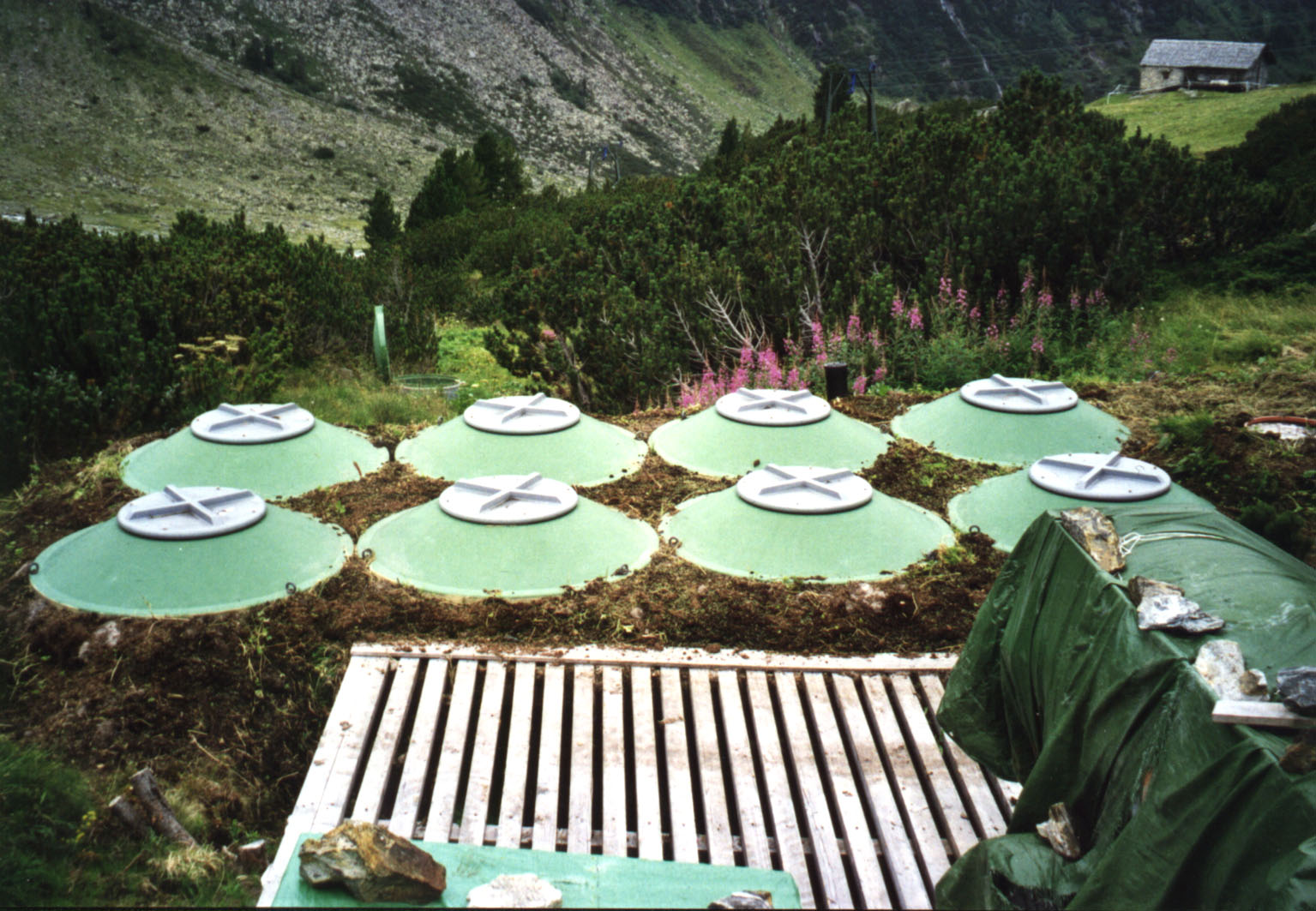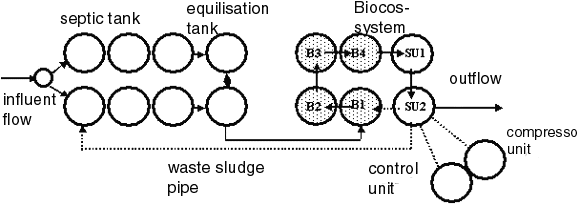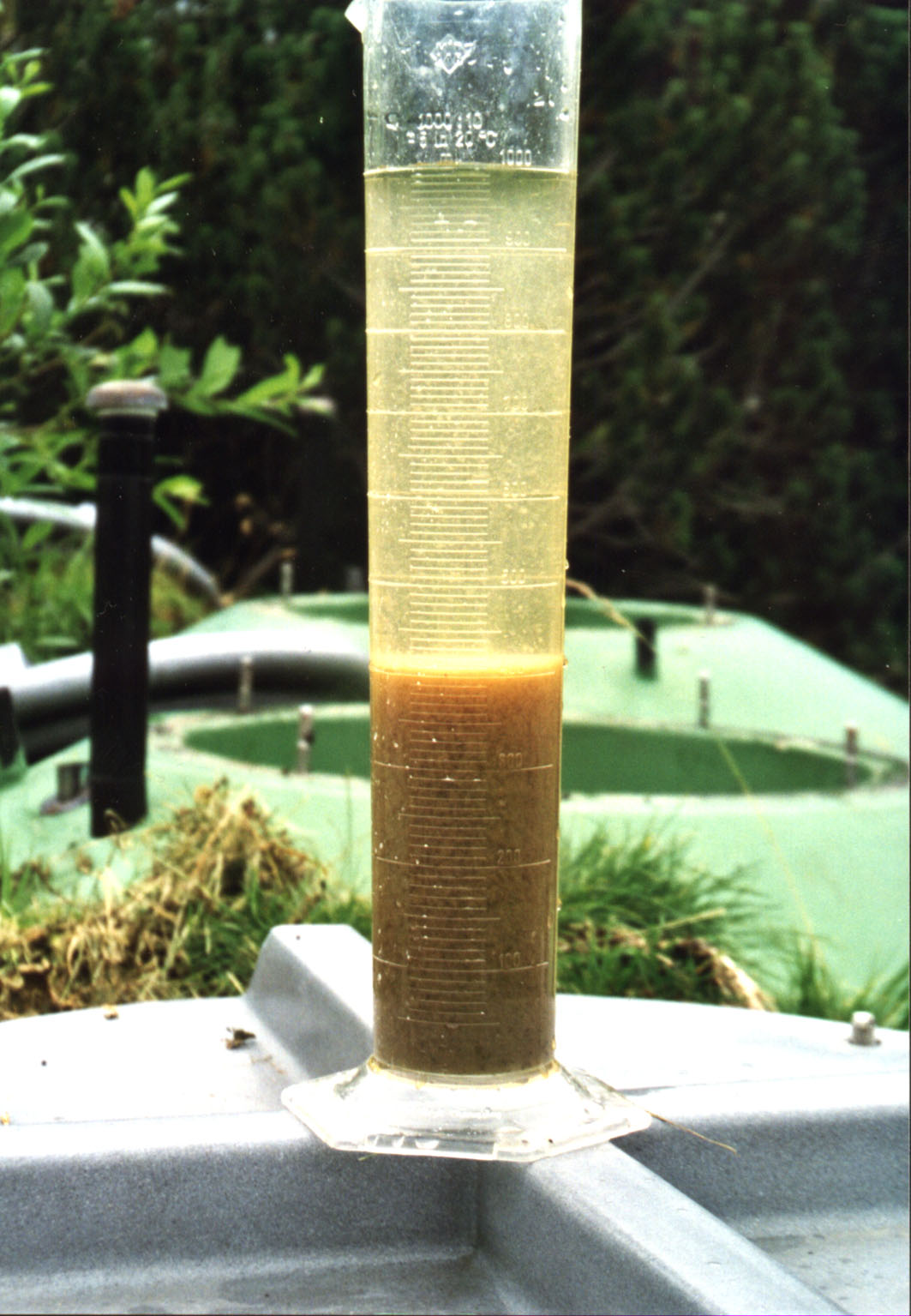environmental benefit of wastewater treatment plants in mountainous areas in the alps

|
Comparison of technology, costs and environmental benefit of wastewater treatment plants in mountainous areas in the alps |

|
Site description and boundary conditions
Design and treatment efficiency
maximum daily organic load [PE]
260
maximum hydraulic load [m3/d]
18
annual organic load [kg BOD/a]
700
altitude [m a.s.l.]
2040
sensitivity [hydrogeology, protected area ...]
granite, river
lagal requirements [BOD elimination]
80 %
operation period [season]
summer
energy supply [type, kW]
water power plant, 50
means of transport [type]
supply cable car
existing WWTP [type, condition, volume l/PE]
14-chambers, good condition, 140


Fig. 4.2: Flow-scheme of the WWTP Berlin Refuge (all 18 tanks of the existing former sludge system have been reused)

Fig. 4.3: Activated sludge sample of the Biocos-plant: The sludge shows sufficient flocculation and settling properties.
Loading of biological treatment
WWTP Berlin Refuge seasonal average max. week max. day loading [PE40] 96 208 260 BOD5-load [kg/d] 3.8 8.6 10.7 influent flow Q [m3/d] 7 14 18
Design according to the F/M ratio in the max. week
V aerob = 4 x 2 m2 x 1.2 m = 9.6 m3 (volume B-tank)
Maerob = 9.6 m 3 x 4 kg SS/m3 = 38.4 kg SS (aerobic sludge mass)
BSS = 8.6 kg BOD 5/d : 38.4 kg SS = 0.22 kg/kg.d (aerobic sludge loading)
OB = 8.6 x 3 kg O2 /kg BOD5 : 24 h = 1.1 kg O2/h (oxygen demand)
Energy demand
max. power [W] max. electric work [kWh/d] mean electric work [kWh/d] 700 12.5 12.5
Treatment efficiencies
date
[dd.mm.yyyy]
CODeffluent [mg/l] NH4-N effluent [mg/l] NO3-N effluent [mg/l] CODelimination [%] Nelimination [%] loading [% of PE max] 24.8.1999 65 66 0.7 94 1 25.6.2000 55 26 6.8 96 50 19.7.2001 125 2 12.3 87 77 70